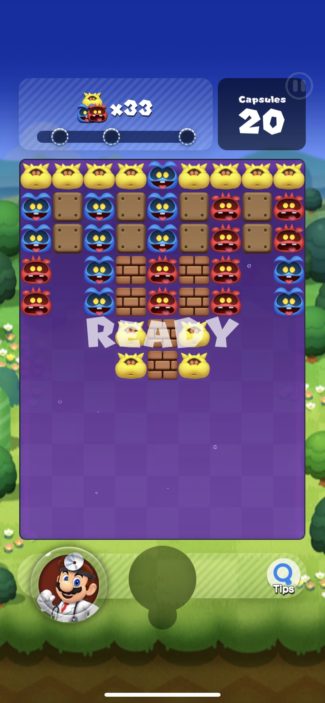The Case of the Golden Idol
LQ: 9.85
Recommended Age: 12+
Skills Used: Focus, Working Memory, Mathematics, Reading

Dr. Mario World takes one of gaming’s most recognizable characters (Mario) and puts him into a match-3 style game. In this game, viruses have infected the land of Mario. Everyone–hero and villain alike–teams up to fight them. The player shoots “pills” at the viruses in each level, making groupings of three or more in a row or column. When they make the right grouping, the viruses disappear. The player wins when he or she beats all the viruses in a level.
Beating levels earns a player stars and coins. Stars can be collected to meet goals, which also give coins. Coins can be used to buy new “staff” (or characters). The player gets to choose one main character to start out with and then must buy the rest.
Dr. Mario World has in-app purchases. The ESRB rated it E for Everyone and LW4k stands by this rating.
Dr. Mario World helps kids practice and improve the following skills:

Adapting and adjusting to changing conditions and expectations.
As the player advances in levels, they will face more and more obstacles. The different types of obstacles will require the player to change their strategy in order to be successful. This means that the player has to use their flexibility skills: they must adapt to new obstacles and they must try new things.
Even those players who are used to match-3 style games (and the obstacles that appear in them) will have to stretch their flexibility more than normal, due to the simple fact that Dr. Mario World has unique pieces. Not only are there different obstacles in the viruses (such as some that are hidden or frozen), but the pills can be one solid color, half-and-half of two colors, and can be rotated into four different positions. On top of that, if the pill is lined up in the right way, half the pill will be "used" and the other half will continue to float higher up the game board. This means that instead of having one or two places where a piece may fit, the player has to choose between (potentially) dozens of options. Staying flexible in how he or she uses the pills is the only way to ensure success on every level.
Arranging and coordinating materials in order to complete a task.
Because every level has a different layout, with different obstacles and goals, and each pill can be placed in many different locations, the player needs to engage their organizational thinking skills if they are going to be successful. They must think about the different places a pill can fit, which way the pill fits best, and even if part of the pill will be able to be used higher up on the game board. If the player does not think completely through the organization and placement of each pill, they will run out of pills (or time) to beat the level. When that happens, they fail to earn stars and instead use up a heart.
All membership plans come with full access to our entire suite of tools learning guides, and resources. Here are a few of the ones we think you’ll like the most: